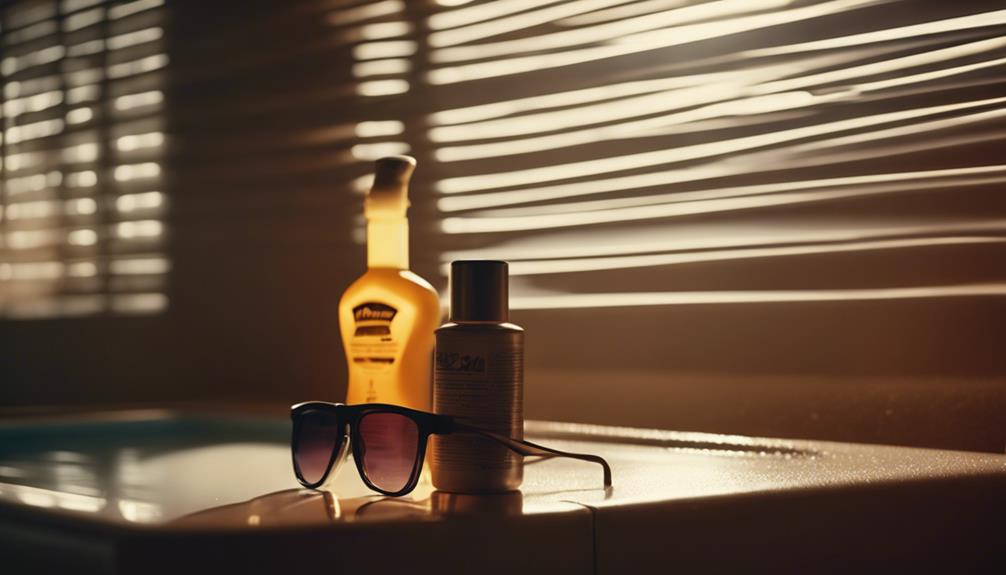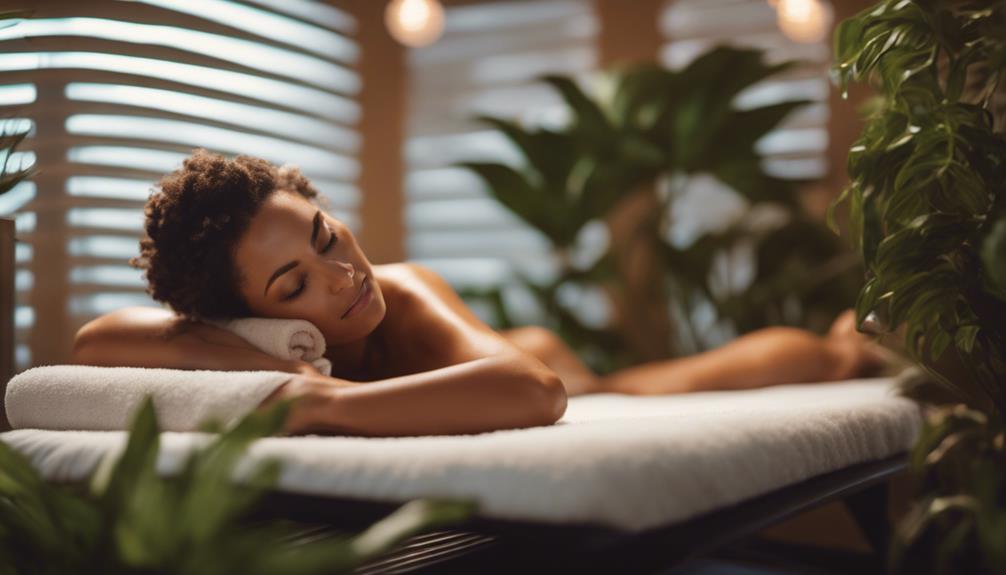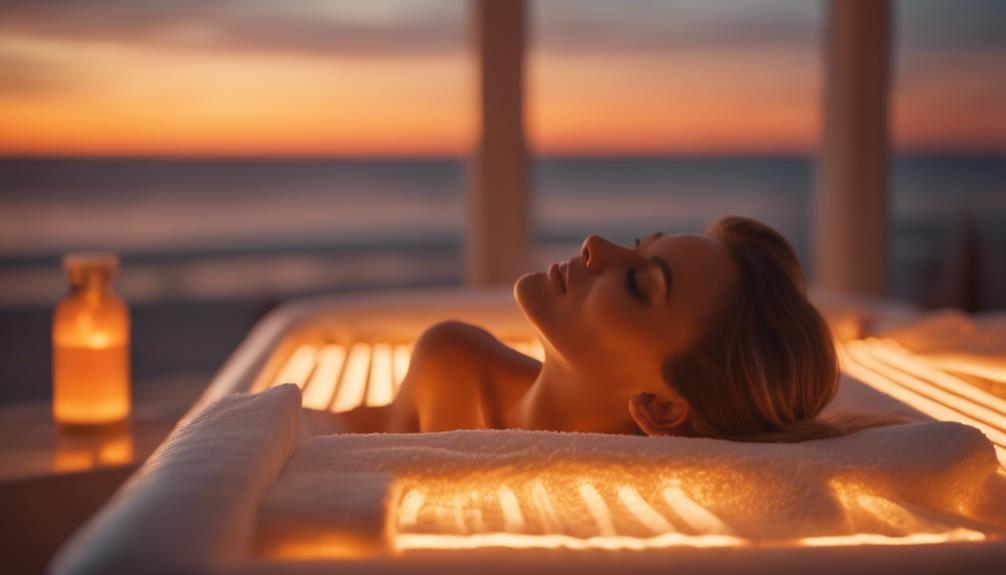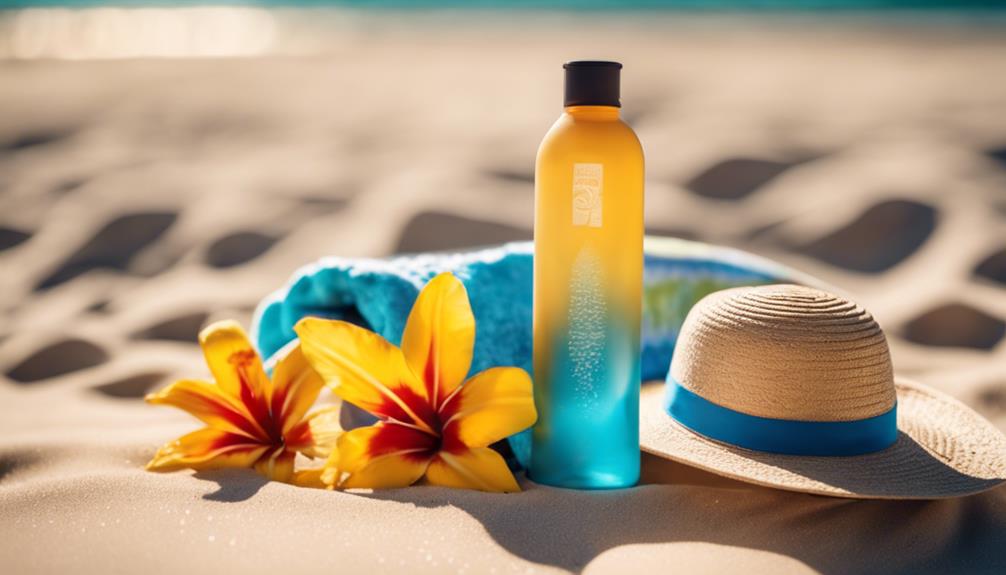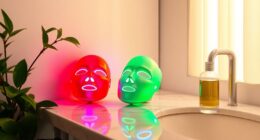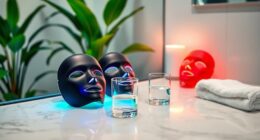Tanning beds might seem like an easy way to get a sun-kissed glow, but they come with serious hidden dangers. The intense UV rays can damage your skin, leading to premature aging and a significant increase in melanoma risk, especially if you're under 35. Each session weakens your skin defenses and strains your immune system, making you more vulnerable to health issues. Allergic reactions can also occur, causing redness and irritation. Instead of risking it, consider safer alternatives for a tan. If you want to know more about protecting your skin while achieving that desired look, there's plenty to uncover.
Key Takeaways
- Tanning beds significantly increase the risk of skin cancer, particularly melanoma, especially in individuals under 35.
- Prolonged UV exposure from tanning beds damages DNA, accelerating skin aging and increasing chronic health risks.
- Regular use of tanning beds weakens the immune system, complicating the body's ability to fight infections and respond to vaccines.
- Symptoms of premature aging, like wrinkles and dark spots, arise from cumulative UV damage caused by tanning bed exposure.
The Science of UV Rays
Understanding the science behind UV rays is crucial, as they can considerably impact your skin health and overall well-being.
UVA rays, primarily emitted by tanning beds, penetrate deep into your skin, causing damage to collagen and elastin. This damage not only accelerates skin aging but also weakens your skin's defenses, making you more susceptible to infections. Each tanning session adds to cumulative skin damage, increasing the risk of chronic health issues over time.
Additionally, prolonged UV exposure can compromise your immune system, hindering your body's ability to fight off infections and affecting vaccine efficacy.
Skin Cancer Risks Explained
Tanning beds greatly increase your risk of skin cancer, particularly melanoma, due to the harmful UVA rays they emit. Each time you step into a tanning bed, you expose your skin to intense UV radiation that damages your DNA. This damage accumulates over time, raising your chances of developing skin cancer, especially if you're under 35.
Studies show that indoor tanning users are considerably more likely to be diagnosed with melanoma compared to non-users. Additionally, the immune system can weaken with repeated exposure, making it harder for your body to fight off skin abnormalities.
Signs of Premature Aging

Premature aging can manifest as wrinkles, sagging skin, and dark spots, all of which are accelerated by the UV damage caused by tanning beds.
When you expose your skin to these harmful rays, you're speeding up the breakdown of collagen and elastin, essential proteins that keep your skin firm and youthful.
Over time, you may notice fine lines appearing around your eyes and mouth, and your skin may lose its natural elasticity.
Additionally, uneven skin tone and dark spots can develop, making you look older than your years.
These signs of aging aren't just cosmetic; they also indicate deeper skin damage that can lead to more serious health issues.
It's vital to recognize these warning signs and reconsider your tanning habits.
Essential Protective Strategies
Protecting your skin from the harmful effects of UV exposure is essential for maintaining its health and appearance.
Always use a broad-spectrum sunscreen with an SPF of 15 or higher, and reapply every two hours, especially if you're outdoors.
Wear protective eyewear to shield your eyes from UV rays.
Opt for tightly woven clothing, wide-brimmed hats, and sunglasses for added protection.
Instead of tanning beds, consider self-tanners for a safer glow.
Limit your tanning sessions and follow the manufacturer's guidelines.
Before using a tanning bed, clean it to maintain proper hygiene, and monitor your skin for any adverse reactions afterward.
These strategies can help you enjoy the sun without compromising your skin's health.
Choosing the Right Salons
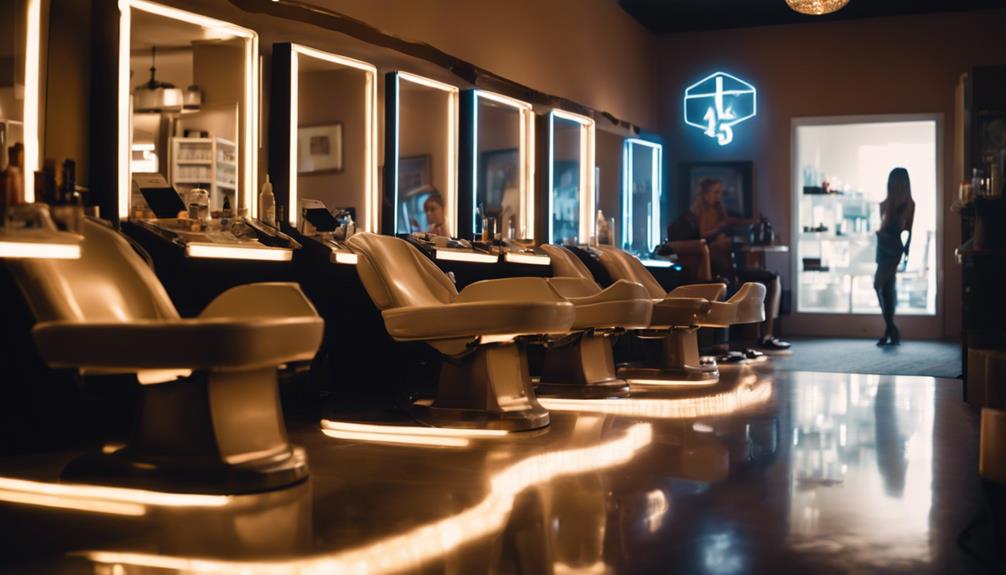
Selecting a safe salon is crucial for minimizing the risks associated with indoor tanning.
First, verify the salon complies with FDA guidelines; this helps assure a safer environment. Ask about their sanitation practices and the age of their tanning bulbs, as outdated equipment can pose additional risks.
Look for salons that prioritize skin protection and customer safety; read customer reviews to gauge their credibility. If a salon can't provide clear safety information or demonstrate proper tanning practices, it's best to look elsewhere.
Allergy Triggers and Reactions
When choosing a tanning salon, it's important to be aware that UV radiation can trigger allergic reactions in some individuals, especially if they're sensitive or taking certain medications. You should know your body and any reactions you might have.
| Allergens | Symptoms | Precautions |
|---|---|---|
| UV Radiation | Redness, itching | Limit exposure time |
| Certain Medications | Rash, swelling | Consult with a doctor |
| Existing Skin Conditions | Blisters, irritation | Use protective barriers |
If you experience any adverse effects post-tanning, stop immediately and consult a healthcare professional. Staying informed about your body's reactions can help you make safer tanning choices.
Innovations in Safe Tanning

Innovations in safe tanning have introduced a range of products and techniques designed to minimize UV exposure while still achieving a radiant glow. You can now enjoy a sun-kissed look without the damaging effects of traditional tanning beds.
Here are some exciting advancements to contemplate:
- Self-tanning lotions and sprays: These products provide a natural-looking tan without UV exposure, allowing you to control the depth of color.
- LED tanning devices: Using specific wavelengths of light, these devices can stimulate melanin production safely, offering a tan without traditional UV rays.
With these innovations, you can achieve that desired glow while prioritizing your skin's health.
Frequently Asked Questions
How Do Tanning Beds Differ From Natural Sunlight Exposure?
Tanning beds primarily emit UVA rays, while natural sunlight offers a mix of UVA and UVB rays. This difference affects how your skin responds, leading to varying risks of damage and health concerns over time.
Are There Specific Skin Types More Prone to Tanning Bed Damage?
Like a moth to a flame, fair-skinned individuals and those with a history of sunburn are particularly prone to tanning bed damage. Your skin type considerably influences your risk of adverse effects from UV exposure.
What Are the Short-Term Effects of a Tanning Bed Session?
After a tanning bed session, you might notice immediate skin redness, warmth, or a slight tan. Your skin can feel dry or tight, and you could experience temporary discomfort or itching as it reacts to UV exposure.
Can Tanning Beds Cause Eye Damage Even With Goggles?
Yes, tanning beds can still cause eye damage even with goggles. While goggles provide some protection, they may not completely block all UV rays, leaving your eyes vulnerable to harmful exposure and potential long-term damage.
How Often Is It Safe to Use a Tanning Bed?
Like Icarus soaring too close to the sun, using a tanning bed too often can be risky. It's best to limit sessions to once a week, ensuring you prioritize skin health over a temporary glow.
Conclusion
As you ponder that next tanning session, consider this: the seemingly harmless glow might come at a steep price.
What if the risks of skin cancer and premature aging lurk just beneath the surface? Each time you step into that bed, you're playing a dangerous game.
But there's hope—options exist that can give you that radiant look without the hidden hazards.
Will you take the plunge, or will you choose a safer path? The choice is yours.
